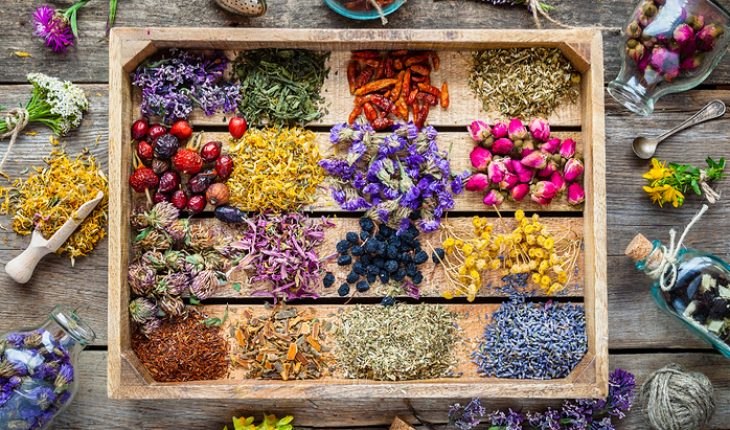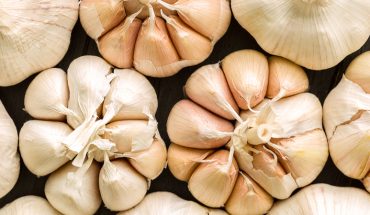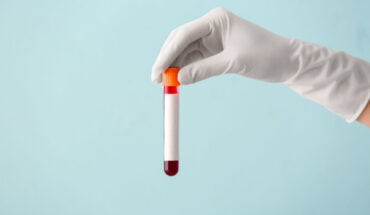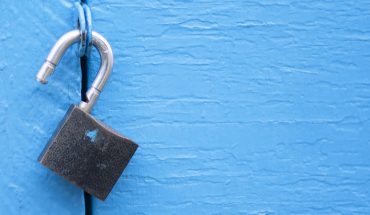Herbalism is an ancient form of medicine. Herbs and plants can be used to treat a wide range of conditions ranging from burns, to ulcers, flatulence, laryngitis, insomnia and psoriasis. Here are some common herbs and their uses. Never take herbal supplements if you are on medication without checking with your doctor first.
Echinacea: Echinacea purpurea
This purple daisy is native to America. The root is used to make the remedies which are said to support the immune system and ward off infections. Tincture of echinacea is used to treat shingles, ulcers, flu and tonsillitis. It can also be used as a mouthwash. Homeopathic echinacea is used to treat blood poisoning, chills, aches and nausea.
Garlic: Allium sativum
This is a pungent bulb that belongs to the onion family. Can be eaten daily or taken as pills. It contains the natural antiseptic, allicin, and helps to support the immune system. Taken regularly, it may help to ward off coughs and colds. It is also effective against sinusitis and intestinal worms. The fresh juice is a natural remedy for skin fungal infections. It may have a role to play in preventing some kinds of cancer, including stomach cancer. Eating fresh parsley will reduce the smell.
Evening Primrose Oil: Oenothera biennis
Derived from the seeds of a native American wildflower, this oil contains Gamma Linelonic Acid, a type of omega-6 fatty acid, which lessens joint stiffness. It is also thought to improve brainpower and concentration.
Aloe Vera: Aloe vera
This is a tropical succulent plant that contains a gel which is squeezed from the leaves. The gel can ease the pain of burns and grazes. It also is anti-fungal and anti-bacterial and soothes eczema. A mouthwash is good for sore gums. Whole leaf tincture can be taken to relieve constipation, although aloe vera should not be taken internally during pregnancy.
Feverfew: Tanacetum parthenium
This small daisy-like flower grows throughout Europe and the flowers and leaves are used in herbalism. Fresh leaves are eaten to alleviate the symptoms of migraine. Feverfew can also be used to reduce the pain of arthritis and menstrual pain, but it may cause nausea and vomiting. This herb should not be taken by pregnant women.
Ginkgo: Ginkgo biloba
This comes from the leaves of a tree native to China. The active ingredient is flavone glycosides, which helps to increase blood flow and improve circulation. It may also boost memory. It has blood thinning properties and may occasionally cause nose bleeds.
Arnica: Arnica montana.
This is a yellow flower which grows on mountains. It is often used as a homeopathic remedy. It can help to relieve the shock and pain after an accident. It also helps the body to start healing itself. Arnica ointment can be applied directly to bruised area, although not to broken skin, because it could cause further inflammation.
Frankincense: Boswellia carteri
This is the gum resin that is extracted from the bark of the frankincense tree, found in North Africa and Arabia. As an oil, it is used to ease anxiety and tension. It also has anti ageing properties and helps to heal ulcers and skin wounds.
In a steam infusion, it can relieve bronchitis and wheezing. It is also used to treat cystitis and menstrual problems.
Witch Hazel: Hamamelis virginiana
This is extracted from the bark and leaves of small American tree. Used as tincture or a cream, witch hazel is used externally for bruises, pimples, haemorrhoids and painful varicose veins. As a compress, it can ease swollen tired eyes. It should not be used internally.
Marigold flowers: Calendula officinalis
This popular garden flower has a wide range of uses in herbal medicine but is especially helpful for skin and eye problems. It can soothe inflamed spots and sore varicose veins. Taken as a tea, it helps to relieve menstrual pain. It can also be gargled to ease sore throats.
As a lotion, often known as calendula, is fights fungal infections. The flower petals can be eaten raw on salads or rice.
Ylang Ylang: Cananga odorata
This is a small tropical tree that grows in Madagascar, Indonesia and the Philippines. The essential oil is extracted from the flowers and can be used in a bath, massage, or burned in a room. It has a soothing effect on the nervous system and helps to prevent hyperventilation and palpitations.
It is also said to help sexual problems and impotence in men. It may also have an aphrodisiac effect.
Chamomile: Matricaria chamomilla
This is a plant with feathery leaves and daisy-like flowers, which grows wild throughout Europe. Chamomile tea is soothing and helps to ease insomnia. As an essential oil, it also has a calming effect on the nervous system. It assists with digestive problems and reduces the effect of menstrual problems such as hot flushes, fluid retention and abdominal pain.
Wild Yam: Dioscorea villosa
Wild yam, derived from the rhizome of the Mexican wild yam, is said to ease period pain, menopausal symptoms and vaginal dryness. As a homeopathic remedy, it is used for abdominal pain and renal colic. It is said to work well on persistent or recurrent problems.
Peppermint: Mentha x piperita
This is a very popular herbal remedy. Peppermint tea, made from an infusion of the leaves, aids indigestion, colic and wind. It can also relieve menstrual pain. The essential oil is distilled from the entire plant. Vaporised oil can ease wheezing, sinusitis, asthma and laryngitis. It is also a mild diuretic.
St John’s Wort: hypericum perforatum
This is a common European wild plant, used to treat depression, anxiety and nerve pains. Always check with your doctor before taking this herb because it can interfere with the action of other prescription drugs, including the anti-cancer drug, cyclophosphamide. Never use it for more than a month because it can cause withdrawal symptoms.
Lavender: Lavandula angustifolia
Lavender has antiseptic properties so it can be dabbed straight on to bites, stings, burns and wounds. It is also very soothing. A few drops of lavender oil on the pillow can promote deep sleep. Used in a vaporiser, it acts as natural insect repellent.
The flowers can be drunk as a herbal tea and help to reduce stress.
Tea Tree: Melaleuca alternifolia
This pungent remedy is extracted from the leaves and twigs of the tea tree, which grows in Australia. It is a powerful antiseptic and can be used to clean wounds. It also has antiviral and antibacterial properties as well as repelling parasites. It can be used to treat ringworm and can ease skin problems such as acne, eczema and dermatitis.
Ginger: Zingiber officinale
The root of the plant is used to make extracts and oils. It can also be eaten fresh. Ginger helps to prevent nausea and protects the stomach against ulcers. It also contains active ingredients with pain relieving properties. Should not be used by people suffering from gallstones.
- The da Vinci 5 Robot Is Set To Transform Bariatric Care: - 31st March 2025
- Beyond money: the hidden drivers fuelling child food insecurity - 31st March 2025
- Tobacco and Vapes Bill - 31st March 2025






